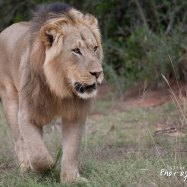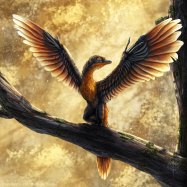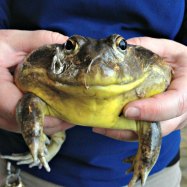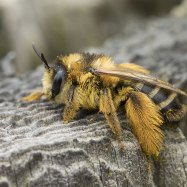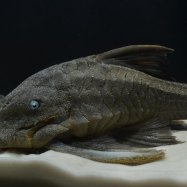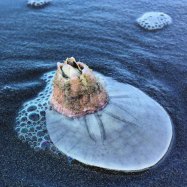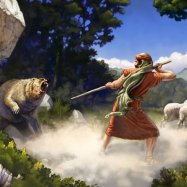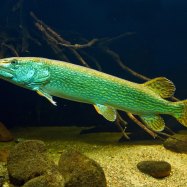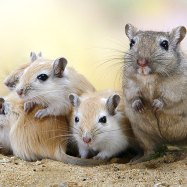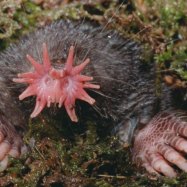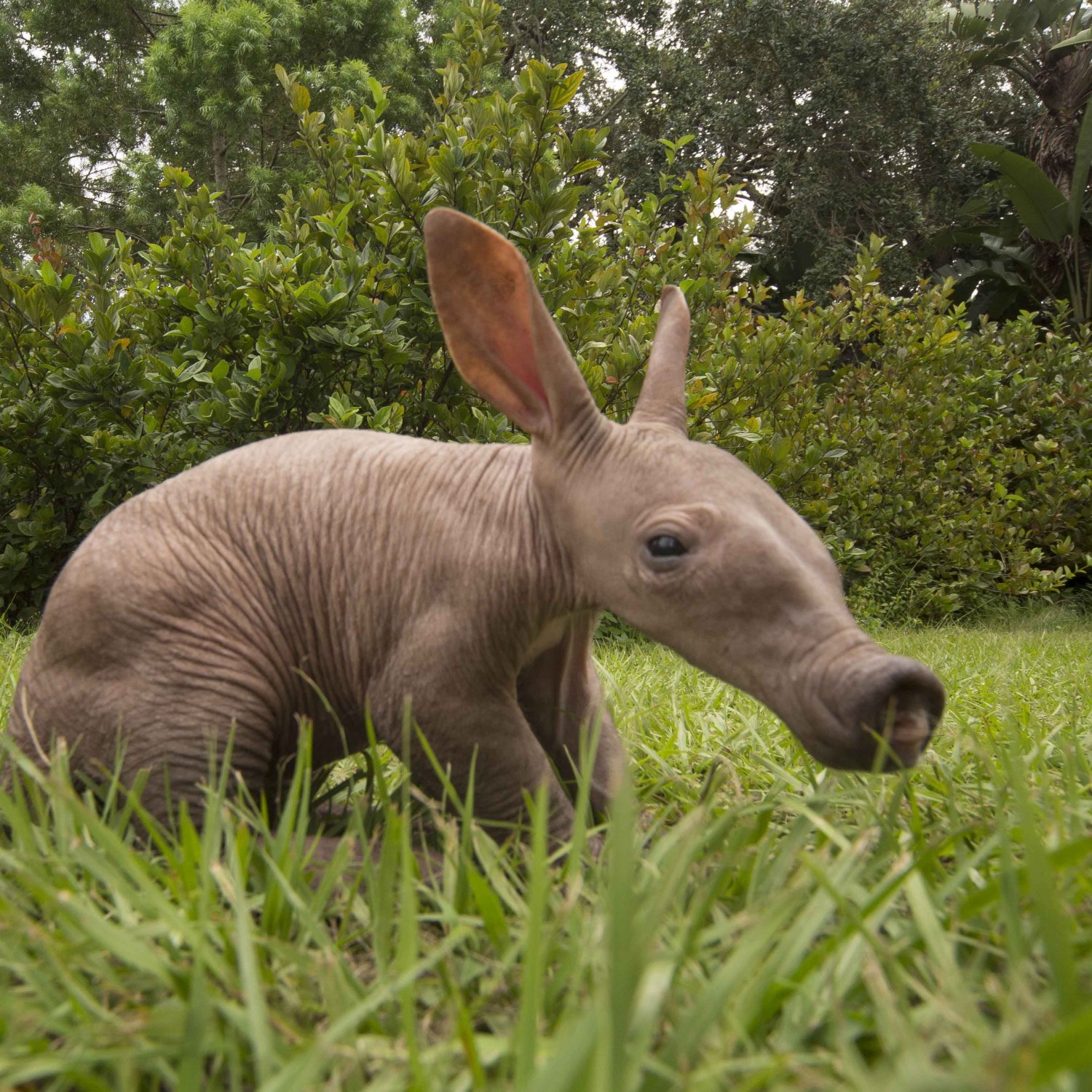
Aardvark
1.0 to 1.3 meters
Aardvarks are fascinating animals found in sub-Saharan Africa. With a stocky body, large head, and elongated snout, they can measure 1 to 1.3 meters long. Belonging to the Orycteropodidae family, they are also known as ant bears and play a vital role in maintaining the ecosystem. #animals #Aardvark #sub-SaharanAfrica
Animal Details Summary:
Common Name: Aardvark
Kingdom: Animalia
Habitat: Savannas, grasslands, and woodlands
The Aardvark: A Fascinating Creature of the African Savannas
Welcome to the world of the aardvark - a creature that is often overlooked but holds a special place in the African savannas. This unique animal with its fascinating features and behaviors has been studied and admired by researchers and nature enthusiasts for centuries.Scientifically known as Orycteropus afer, the aardvark belongs to the kingdom Animalia, phylum Chordata, and class Mammalia. It belongs to the order Tubulidentata and the family Orycteropodidae, making it one of the few surviving species of its order and family Aardvark. Let's dive deeper into the world of this solitary and elusive creature.
Habitat and Distribution
The aardvark's natural habitat consists of savannas, grasslands, and woodlands, making it adaptable to diverse environments. It is primarily found in sub-Saharan Africa, including countries like Botswana, Kenya, Mozambique, South Africa, and Zimbabwe. With its excellent digging abilities, the aardvark can create burrows in various habitats for shelter and safety.Physical Characteristics
The aardvark's appearance is a unique combination of different features that make it stand out from other animals. It has a cylindrical body, a large head, and a long snout. The snout, which is used for foraging, is equipped with powerful muscles and sensory hairs. Its front legs are strong and have sharp claws for efficient digging.With a stocky body, the aardvark can reach a length of 1 American Water Spaniel.0 to 1.3 meters and weigh between 40 to 65 kilograms. Its limbs are short and stout, and its tail is long and thick with a bushy tip. These features, along with its grayish-brown fur, help it blend in with its surroundings and stay hidden from predators.
Diet and Feeding Behavior
As an insectivorous mammal, the aardvark's diet consists mainly of termites and ants. It uses its claws to dig burrows and use its long, sticky tongue to catch its prey, which can number up to 50,000 insects per night. The aardvark also has specialized teeth called tubulidentata, which are made up of tiny, cylindrical, and continuously growing teeth. It uses these teeth to grind up the tough exteriors of insects.Behavior and Lifestyle
The aardvark is a solitary and nocturnal animal, spending most of its time underground in its burrow during the day and emerging at night to forage for food. It is a skilled digger, and its burrows can reach up to 3 meters deep and 13 meters long. It has sharp hearing and a keen sense of smell, which help it navigate and find food in the dark.Though a solitary animal, aardvarks do not have exclusive territories and may cross paths while foraging. They are mostly peaceful and territorial only when it comes to their burrows. They have a slow and lumbering gait due to their short legs, but they can move surprisingly fast when needed.
The Aardvark and Human Interaction
With the increasing human activities in their natural habitat, aardvarks have been facing a decline in numbers. They are often victims of road traffic accidents and are hunted for their meat and scales, which are believed to have medicinal properties in some cultures. Habitat destruction and fragmentation also contribute to their dwindling population.However, aardvarks can also have a positive impact on humans. They have a significant role in ecosystem balance as they help control termite and ant populations, which could otherwise cause damage to crops. They are also crucial prey for larger predators like lions and hyenas.
Fascinating Facts about Aardvarks
- Aardvarks are the only living species of their taxonomic order and family, making them a unique and special animal.- They have excellent hearing and can even hear the sound of termites chewing underground.
- Aardvarks are expert diggers and can excavate a 10-meter long burrow in just five minutes.
- These animals have been featured in many myths and legends in African folklore, often associated with death, resurrection, and protection against evil spirits.
- Aardvarks are solitary and rarely interact with other individuals except during mating season.
In Conclusion
The aardvark may not be the first animal that comes to mind when thinking of African wildlife, but it is undoubtedly one that should not be overlooked. With its unique physical features, feeding habits, and behavior, the aardvark is a fascinating creature that deserves more recognition.While their population is facing threats, conservation efforts are being made to protect these elusive animals. With more research and understanding of their role in the ecosystem, we can ensure the survival of this ancient and remarkable species for many generations to come. So let's continue to admire and appreciate the aardvark and all its wonders in the savannas of Africa.

Aardvark
Animal Details Aardvark - Scientific Name: Orycteropus afer
- Category: Animals A
- Scientific Name: Orycteropus afer
- Common Name: Aardvark
- Kingdom: Animalia
- Phylum: Chordata
- Class: Mammalia
- Order: Tubulidentata
- Family: Orycteropodidae
- Habitat: Savannas, grasslands, and woodlands
- Feeding Method: Insectivorous
- Geographical Distribution: Sub-Saharan Africa
- Country of Origin: Africa
- Location: Aardvarks are found in several countries in sub-Saharan Africa, including Botswana, Kenya, Mozambique, South Africa, and Zimbabwe.
- Animal Coloration: Pale yellowish-gray to reddish-brown
- Body Shape: Stocky with a large head, long snout, and cylindrical body
- Length: 1.0 to 1.3 meters
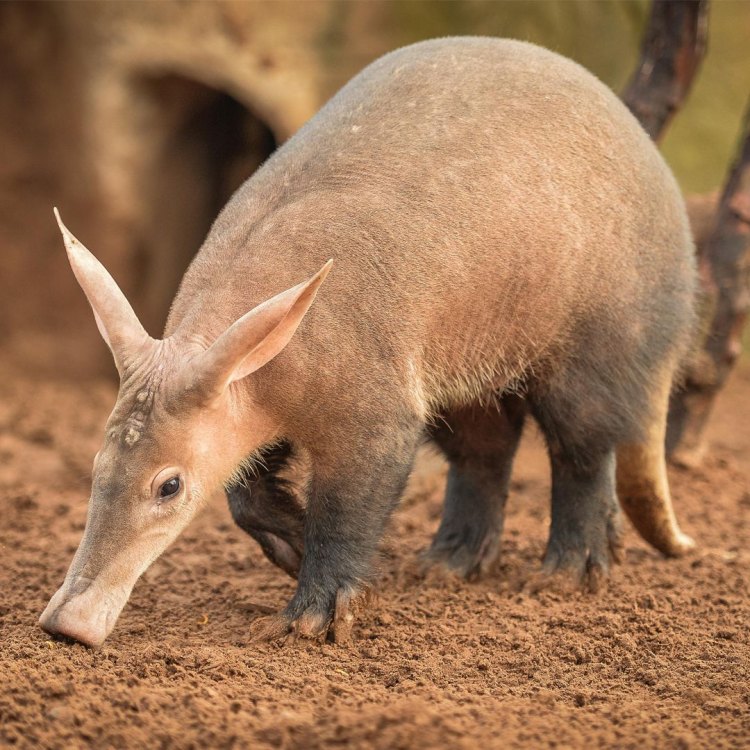
Aardvark
- Adult Size: Adult aardvarks weigh between 60 to 80 kilograms
- Average Lifespan: 15 to 20 years
- Reproduction: They are solitary animals except for mating season
- Reproductive Behavior: Aardvarks are polygynous, meaning males mate with multiple females.
- Sound or Call: Aardvarks communicate through snorts, grunts, and screams
- Migration Pattern: Non-migratory
- Social Groups: Solitary
- Behavior: Nocturnal and secretive; spend most of their time in underground burrows
- Threats: Habitat loss, poaching, and hunting by humans
- Conservation Status: Near Threatened
- Impact on Ecosystem: Aardvarks play an important role in their ecosystems as ecosystem engineers by creating burrows that are used by other animals.
- Human Use: Occasionally hunted for food by local communities
- Distinctive Features: Long, sticky tongue for catching termites and ants
- Interesting Facts: Aardvarks can dig a burrow in just a few minutes and can consume up to 50,000 insects in one night.
- Predator: Their main predators are lions, leopards, and hyenas.
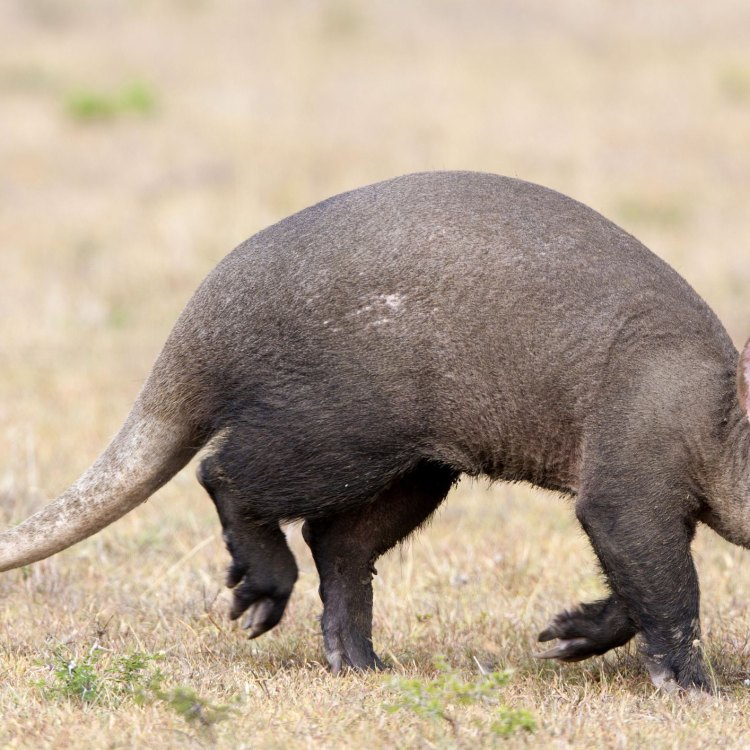
Orycteropus afer
The Fascinating World of the Aardvark: Africa's Hidden Ecosystem Engineer
In the vast and diverse continent of Africa, there is a unique animal that is often overshadowed by its more well-known counterparts. The aardvark, also known as the "earth pig" or "cape anteater," may not be as iconic as the lion or the elephant, but it has a fascinating and vital role in its ecosystem. From its solitary lifestyle to its distinctive features, the aardvark has many unique characteristics that make it a truly remarkable creature. So, let's delve into the world of the aardvark and discover the secrets of this elusive animal PeaceOfAnimals.Com.The Aardvark's Physical Characteristics
The aardvark (Orycteropus afer) is a mammal native to Africa and is the only living species in its order, Tubulidentata. This unique creature stands out with its distinctive physical features, including a pig-like snout, a kangaroo-like tail, and rabbit-like ears. Adult aardvarks have an average weight of 60 to 80 kilograms and can reach a height of 1.3 meters. They have a robust and sturdy body with a gray-brown coat that is sparsely covered with coarse hairs, protecting their sensitive skin from insect bites.A Solitary and Nocturnal Lifestyle
Aardvarks are solitary animals, meaning they live and hunt alone except during the breeding season. They are also predominantly nocturnal, spending most of their time in underground burrows during the day and emerging at night to forage for food. This secretive nature makes it challenging to study and observe these creatures in their natural habitat.The Aardvark's Fascinating Reproduction and Social Behavior
The aardvark's reproductive behavior is quite unique and differs from most mammals Akita. These animals are polygynous, with males mating with multiple females, leading to a polygynous mating system. During the breeding season, male aardvarks search for potential mates and engage in a ritualistic battle with other males to establish dominance and secure breeding rights. This behavior is known as "fighting skittles" due to the aardvarks' swift movements.Once the female has selected her mate, the couple will remain together for about two weeks, mating several times a day. After mating, the female aardvark will give birth to a single offspring, called a "calf," after a gestation period of seven months. The calf will stay with its mother for about six months, after which it will leave to establish its territory. The aardvark's average lifespan is between 15 to 20 years, with females giving birth every 4 to 5 years.
Despite their solitary nature, aardvarks do have some social interactions. During foraging, they may encounter other aardvarks and briefly interact with them through snorts, grunts, and screams. These vocalizations serve as a form of communication, helping aardvarks to establish territorial boundaries and potential mating opportunities.
The Aardvark's Unique Adaptations
The aardvark's physical characteristics are not the only things that make them unique. They also have incredible adaptations that enable them to thrive in their environment. One of the most noticeable is their long, sticky tongue, which they use to catch their favorite food – termites and ants. This tongue can reach over 30 centimeters, and aardvarks can flick it in and out of their mouth up to 150 times per minute. They can consume up to 50,000 insects in one night, making them crucial in controlling the population of these pests.Aardvarks also have thick and strong claws on their front feet, which they use to dig burrows and excavate their food. These claws are so powerful that they can dig a burrow in just a few minutes, providing them with shelter from predators and extreme weather conditions.
The Role of Aardvarks in Their Ecosystem
Aardvarks are considered ecosystem engineers, meaning they play a vital role in shaping and maintaining their environment. By digging intricate and interlinked burrow systems, they create microhabitats for themselves and other animals, such as hyenas, warthogs, and meerkats. These burrows also provide shelter for many species, protecting them from extreme temperatures and predators.Moreover, the aardvark's foraging behavior and burrowing activities play a crucial role in nutrient cycling and soil turnover. By digging burrows and consuming vast amounts of insects, aardvarks help aerate the soil, allowing for better water absorption and plant growth. Their burrows also act as natural composters, enriching the soil with nutrients and providing a fertile environment for plant growth.
The Threats Facing Aardvarks
Unfortunately, aardvarks are facing increasing threats in their natural habitat. The main threat to these animals is habitat loss due to human development, such as agriculture and urbanization. As a result, aardvarks' burrow systems, which are vital for their survival and the ecosystem, are destroyed.Additionally, aardvarks are sometimes hunted for food by local communities, even though they are protected by law in most African countries. These animals are also poached for their body parts, which are believed to have medicinal properties in some traditional medicines.
The Conservation Status of Aardvarks
Due to the threats mentioned above, aardvarks are listed as Near Threatened on the International Union for Conservation of Nature (IUCN) Red List. While their population is currently stable, any further habitat loss and poaching could lead to a significant decline in their numbers. To ensure the survival of aardvarks, conservation efforts must focus on protecting their habitat, as well as educating local communities to reduce hunting and poaching.Aardvarks and Humans
As mentioned earlier, aardvarks are occasionally hunted by local communities for food, and their burrows are also hunted for medicinal purposes. However, aardvarks have also been used for various human purposes throughout history. In ancient Egypt, they were revered and even worshiped as symbols of fertility and protection. Their burrows were also used as underground tombs by ancient Egyptians.In some rural areas, aardvarks are considered a delicacy and are often hunted for their meat. In some cultures, their body parts, such as their claws, are believed to bring good luck and are used as amulets or charms.
Fascinating Facts About Aardvarks
Aardvarks have captivated the curiosity of many people, and it's easy to see why. These animals have many unique and fascinating qualities. Here are some interesting facts about aardvarks:- Aardvarks can close their nostrils to keep dirt and insects out while using their powerful snouts to dig for food.
- Aardvarks are surprisingly fast runners and can reach speeds of up to 40 kilometers per hour.
- While they may look plump and slow, aardvarks are excellent swimmers and can hold their breath for up to five minutes.
- The aardvark's closest living relative is the elephant shrew, despite their significant size difference.
- Aardvarks can survive without water for long periods, obtaining all the moisture they need from the insects they eat.
Aardvarks' Main Predators
Despite their powerful claws and speed, aardvarks have a few predators that can pose a threat to them. The main predators of aardvarks are lions, leopards, and hyenas. These predators often prey on aardvarks when they are outside their burrows foraging for food or when they are smaller and weaker, such as young calves. Aardvarks defend themselves by using their claws and speed to escape from predators, and they can also deliver a strong bite if necessary.In Conclusion
The aardvark is an incredible animal with many unique features and adaptations that enable it to thrive in its environment. Despite facing threats, this elusive creature continues to play a vital role in its ecosystem as an ecosystem engineer. It's essential to raise awareness about the importance of aardvarks and the need to protect their habitat to ensure their survival for generations to come. So, the next time you see an aardvark, remember the important role it plays in Africa's hidden ecosystems.
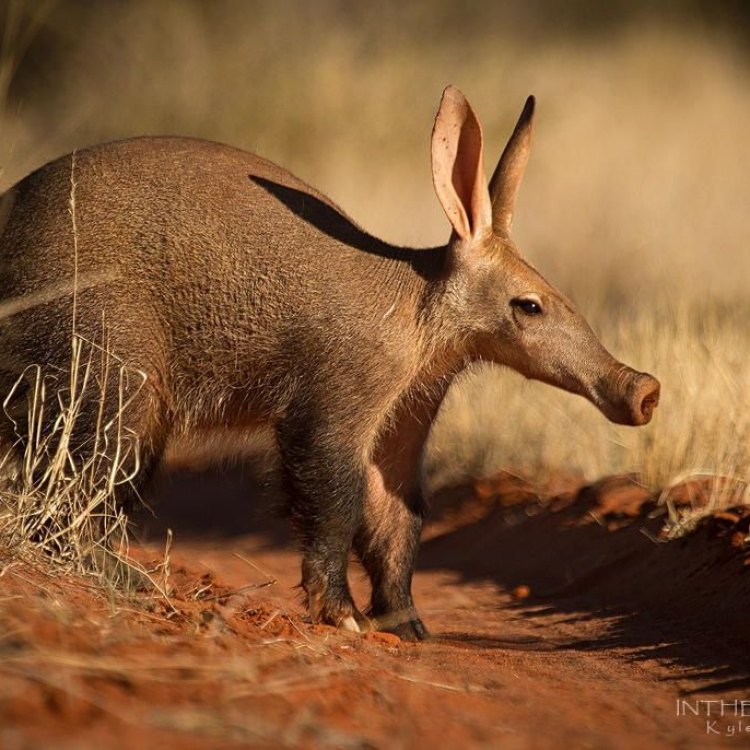
The Aardvark: A Fascinating Creature of the African Savannas
Disclaimer: The content provided is for informational purposes only. We cannot guarantee the accuracy of the information on this page 100%. All information provided here may change without prior notice.

